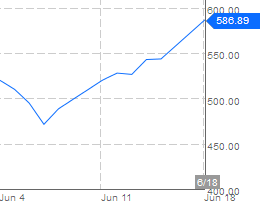The contrasting experiences of the UK and US over recent years, in terms of changes in labour productivity, has been noted for a while. Now, Abigail Hughes and Jumana Saleheen have produced an analysis that shows that UK productivity - having grown strongly in the run-up to the Great Recession - has been sluggish since, in comparison not only with the US but also with other major European economies.
The relatively strong productivity growth in some other economies - particularly in southern Europe - may well be due to the rapid increase in unemployment, with relatively low productivity workers losing their jobs. But the sluggish growth productivity in the UK has to be a source of concern. It reflects, in part at least, a lack of confidence in future prospects, and a consequent failure of businesses to invest.
While demand factors likely dominate the economic situation in the short term, in the longer term supply factors are clearly of paramount importance. The supply side issues that underpin the underperformance of the UK in international comparisons of productivity therefore warrant urgent attention.
Abigail Hughes and Jumana Saleheen (2012). UK labour productivity since the onset of the crisis — an international and historical perspective Bank of England Quarterly Bulletin, 52 (2), 138-146
Wednesday, June 20, 2012
Much of the debate about the merits of austerity policies concerns an empirical issue: how effective can fiscal policy be in stimulating the growth that can later help pay off deficits? Some new evidence on this comes from a paper by Karel Mertens and Morten Ravn (nicely summarised here). It suggests that the medium term response of national output (around 2 years after a shock) to a change in the tax take is quite substantial. Over the long run, of course, it is real things (such as productivity) that affect output growth - but over the short and medium term, fiscal policy can give the economy a substantial kick.
Arguing in favour of a fiscal injection that would, in the short term, serve to widen the government's budget deficit does of course represent a tough political challenge. But the evidence is clear that such an injection would serve to promote growth. And, with inflation now back within the Bank of England's target range, the argument that it would stoke inflation is increasingly difficult to sustain.
Karel Mertens and Morten Ravn (2012). A reconciliation of SVAR and narrative estimators of tax multipliers Cornell University Working Paper
Arguing in favour of a fiscal injection that would, in the short term, serve to widen the government's budget deficit does of course represent a tough political challenge. But the evidence is clear that such an injection would serve to promote growth. And, with inflation now back within the Bank of England's target range, the argument that it would stoke inflation is increasingly difficult to sustain.
Karel Mertens and Morten Ravn (2012). A reconciliation of SVAR and narrative estimators of tax multipliers Cornell University Working Paper
Monday, June 18, 2012
Friday, June 15, 2012
Two new packages of support for the UK economy have been announced in a speech by the Chancellor of the Exchequer at the Mansion House speech yesterday. The Bank of England's 'funding for lending' scheme will release £80 billion worth of loans, at low rates of interest, to commercial banks which will then undertake to lend to businesses. Meanwhile, in addition, 6-month loans will be offered to the commercial banks - the intention is to loan out at least £5 billion per month in this way. The aim of these two schemes is to effect a significant injection into the economy, which is facing what Mervyn King, Governor of the Bank of England, yesterday described as 'an ugly picture'.
Faced by such a dismal economic picture, the success of these initiatives will depend on the extent to which extra liquidity will translate into extra economic activity. With gloomy prospects and low levels of confidence about the medium term outlook, businesses may not consider this to be the best time to invest. Pushing 'Plan A' - expansionary monetary policy combined with fiscal retrenchment - to the limit is all well and good. But in a liquidity trap monetary policy alone cannot deliver growth.
Faced by such a dismal economic picture, the success of these initiatives will depend on the extent to which extra liquidity will translate into extra economic activity. With gloomy prospects and low levels of confidence about the medium term outlook, businesses may not consider this to be the best time to invest. Pushing 'Plan A' - expansionary monetary policy combined with fiscal retrenchment - to the limit is all well and good. But in a liquidity trap monetary policy alone cannot deliver growth.
The government's White Paper on banking reform, published yesterday, represents a response to the report of the Independent Commission on Banking led by Sir John Vickers. The recommendations made by Vickers have in large measure been taken up. This means that retail banking will be ring-fenced, protecting depositors in the retail market from potential adverse consequences of risky activities undertaken elsewhere in the bank. Vickers (in paragraph 2.28 of the report) recommended that the leverage ratio (the ratio of equity to assets) should be set at a minimum of just over 4% for large banks - above the international norm of 3% - as a means of safeguarding the ring-fenced activity against excessive risk. The White Paper indicates that the government has not accepted this recommendation, and retains a 3% requirement. Nevertheless, the government's proposals are, in large measure, those of the Commission.
Much remains to be done, however. A key failing of the banking system is that it is insufficiently competitive. The players in this industry are too large. Given the extent to which economies of scale prevail, it is easy to understand how this situation has come about. Nonetheless, other industries are subject to regulation to ensure competition, and banking needs to be no different. The White Paper makes reference to the forthcoming divestment of part of Lloyds Banking Group, and points out that this is an opportunity to increase competition. It is indeed such an opportunity, but I suspect that, beyond hoping that this will be so, the need for much more aggressive regulation remains acute.
Much remains to be done, however. A key failing of the banking system is that it is insufficiently competitive. The players in this industry are too large. Given the extent to which economies of scale prevail, it is easy to understand how this situation has come about. Nonetheless, other industries are subject to regulation to ensure competition, and banking needs to be no different. The White Paper makes reference to the forthcoming divestment of part of Lloyds Banking Group, and points out that this is an opportunity to increase competition. It is indeed such an opportunity, but I suspect that, beyond hoping that this will be so, the need for much more aggressive regulation remains acute.
Monday, June 11, 2012
Spain has become the latest country to require a support package. The EU will provide loans worth up to 100 billion to support the Spanish banking system, this being offered at terms favourable to the Spanish government. Spain's banks performed poorly last year in stress tests conducted in 2011 by the Committee of European Banking Supervisors, and have been left particularly vulnerable following the bad debts that led to the original credit crunch in 2007-08. The EU loans are intended to support these banks for a period. It may be regarded as another attempt to 'kick the can down the road' - in the hope that by buying time the threat of catastrophic failure can be averted.
The initial response of the markets has not been particularly favourable. The spread between Spanish and German interest rates on 10 year loans has once again widened to above 5 percentage points, after falling over the last 10 days. The spread for Italy, widely seen as being the next country to be affected by this contagion, has also risen - in this case passing through the 4.5 percentage point mark. The key test will be the next bond auctions in Spain, scheduled to take place next week.
The initial response of the markets has not been particularly favourable. The spread between Spanish and German interest rates on 10 year loans has once again widened to above 5 percentage points, after falling over the last 10 days. The spread for Italy, widely seen as being the next country to be affected by this contagion, has also risen - in this case passing through the 4.5 percentage point mark. The key test will be the next bond auctions in Spain, scheduled to take place next week.
Subscribe to:
Comments (Atom)

